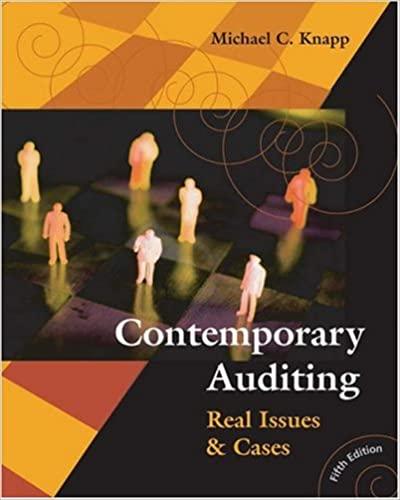Answered step by step
Verified Expert Solution
Question
1 Approved Answer
ABC Company's accountant had prepared the following schedule for its accounts receivable for its 2019 year-end: Accounts Receivable Category Amount Proportion expected to Default Not


Step by Step Solution
There are 3 Steps involved in it
Step: 1

Get Instant Access to Expert-Tailored Solutions
See step-by-step solutions with expert insights and AI powered tools for academic success
Step: 2

Step: 3

Ace Your Homework with AI
Get the answers you need in no time with our AI-driven, step-by-step assistance
Get Started


